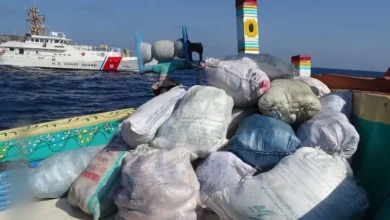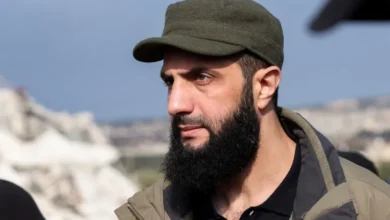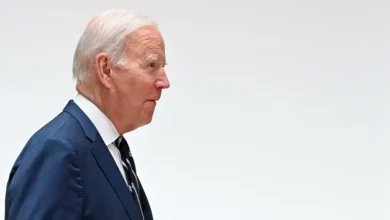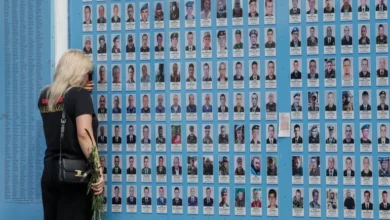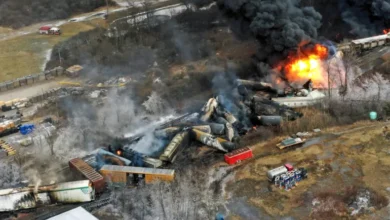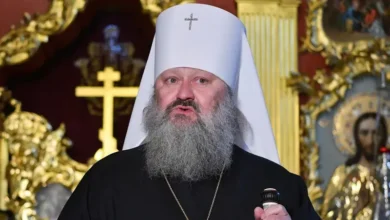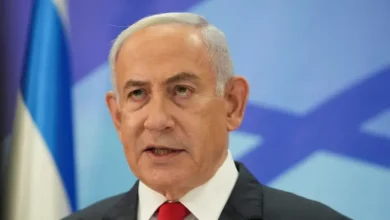Israel-Hamas truce: How much aid has entered Gaza?

As the truce between Israel and Hamas extends into its sixth day, aid groups are warning that the war-battered Gaza Strip is on the brink of a full-scale humanitarian crisis.
After nearly two months of Israeli bombardment of Gaza, the “humanitarian pause” was brokered to allow the release of Israeli captives in exchange for Palestinian prisoners. As part of the agreement, more humanitarian aid has been allowed into the Palestinian enclave that has been under near-total siege.
But while United Nations agencies and groups like the Palestine Red Crescent Society have been able to scale up aid entering the enclave through the Rafah border crossing with Egypt, the temporary increase has been insufficient to meet the now critical needs of Gaza’s population of 2.3 million, nearly 80 percent of which is now displaced.
Here’s a breakdown of the aid that Gaza needs, and what it is receiving — even during the truce.
What has the truce changed?
The humanitarian pause began at 7am local time on Friday. Initially brokered for four days, it was extended on Tuesday for two days, which will expire on Thursday morning. As of Tuesday night, Hamas had released 81 of the 240 hostages taken captive while Israel had freed about 180 Palestinian prisoners.
Aid distribution efforts had previously stalled, with agencies warning that perishables were spoiling at the Egyptian border. Now, amid the logistic chaos of the renewed flows, they have been able to deliver limited assistance to the population.
How much aid is entering Gaza
Reporting for Al Jazeera from the southern town of Khan Younis, Hind Khoudary said on Tuesday that at least 750 trucks had crossed the Rafah border into Gaza since Friday.
That works out to roughly 150 trucks per day.
However, on Monday, the UN Relief and Works Agency for Palestine Refugees (UNRWA) told Al Jazeera that 200 trucks of aid would be needed daily over a period of two months to meet the population’s basic needs. Much more fuel is needed to enable the UN agency to power vital services such as sewage treatment plants and water desalination plants.Even that — 200 trucks a day — falls far short of what Gaza, under a land, sea and air siege by Israel since 2007, was receiving before October 7. Before the current war, 500 aid trucks would enter Gaza daily on average, according to the United Nations Office for the Coordination of Humanitarian Affairs (OCHA).
What is the humanitarian situation?
The war has devastated Gaza, killing nearly 15,000 people, with at least 6,800 presumed dead under the rubble. Tens of thousands of injured people have suffered due to medical shortages. While the truce has enabled Palestinians in the besieged enclave a little breathing space and some respite from the constant din of drones and warplanes, the humanitarian situation is dire.
Israel’s war has split the territory of 2.3 million people in two. As its attacks on the north intensified, the Israeli military forced people to move south, where supplies of food, fuel and water have been scarce.
International NGO ActionAid said deliveries were largely limited to the south, where 1.8 million people are now displaced. “For many women propping up households and facing more mouths to feed in Gaza’s overstretched shelters, renewed pauses will not come anywhere near close to helping improve the situation they’re facing,” said the NGO.
OCHA said aid had reached heavily damaged northern areas, where many have remained – including vulnerable groups such as the elderly, injured and disabled people – amid intense air raids on homes, schools and hospitals. But it acknowledged that most of the assistance had reached only Gaza’s south.
The situation in the north remains dangerous, with concerns about dehydration and outbreaks of disease.
Deliveries of fuel to the north have been severely restricted by Israeli forces. The Kamal Adwan Hospital, the only medical facility still operating in the zone, has been starved of supplies necessary for operations.
“If the hospital is not supplied with fuel within hours, the department is at risk of losing those in it, including premature babies, under our care,” Dr Hossam Abu Safiya, head of the paediatric intensive care department, told Al Jazeera.
On Sunday, Cindy McCain, director of the UN World Food Programme, said the entire enclave was “on the brink of famine”. “This is something that … will spread. And with that comes disease and … everything else that you can imagine,” she told CBS, the US network.
What next?
As the truce inches to a possible end, residents fear the bombing will resume.
Israel, which is intent on obliterating Hamas’s presence in the enclave, has been briefing that the armed group has a command and control centre in southern Gaza.
While the south has been dubbed a “safe zone”, the Israeli military had repeatedly attacked Khan Younis prior to the truce. People in the south had been ordered to move towards a slice of the territory, called Muwasi, along the coast.
Stephane Dujarric, spokesperson for UN chief Guterres, said negotiations must continue so that the truce in Gaza could be upgraded to a full humanitarian ceasefire. “This aid barely registers against the huge needs” of Gaza, he said.
